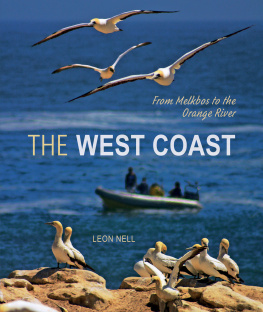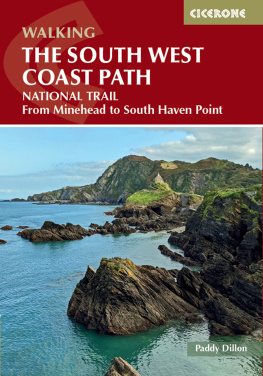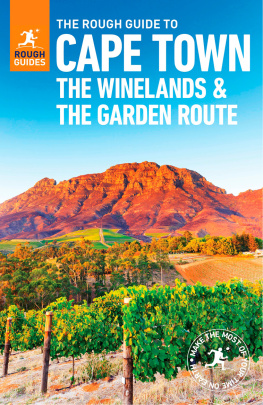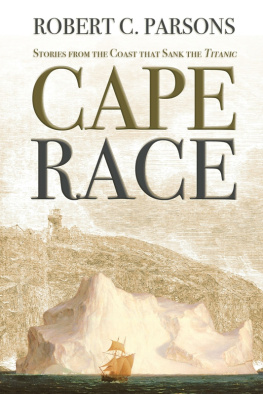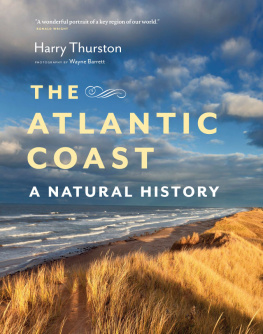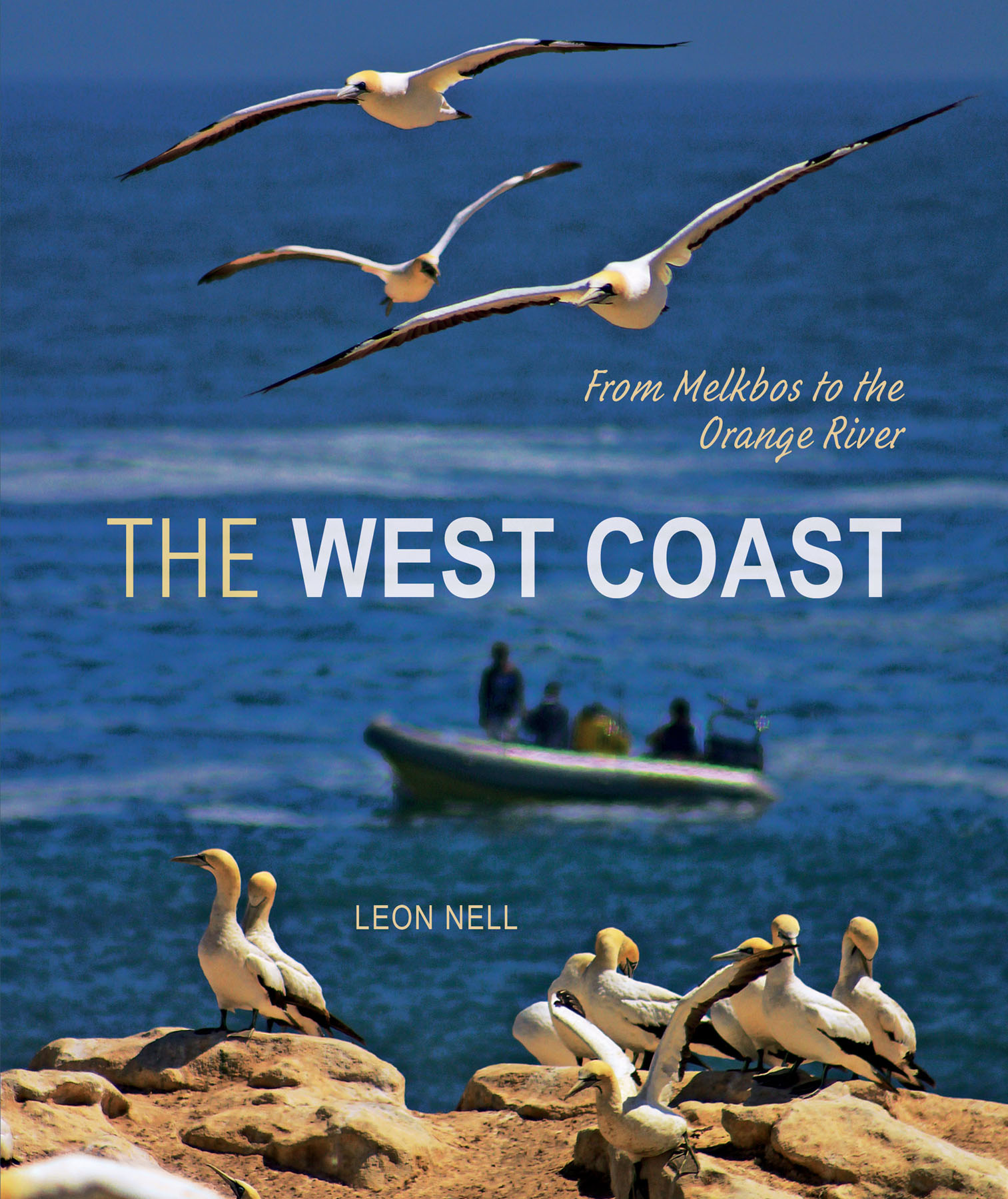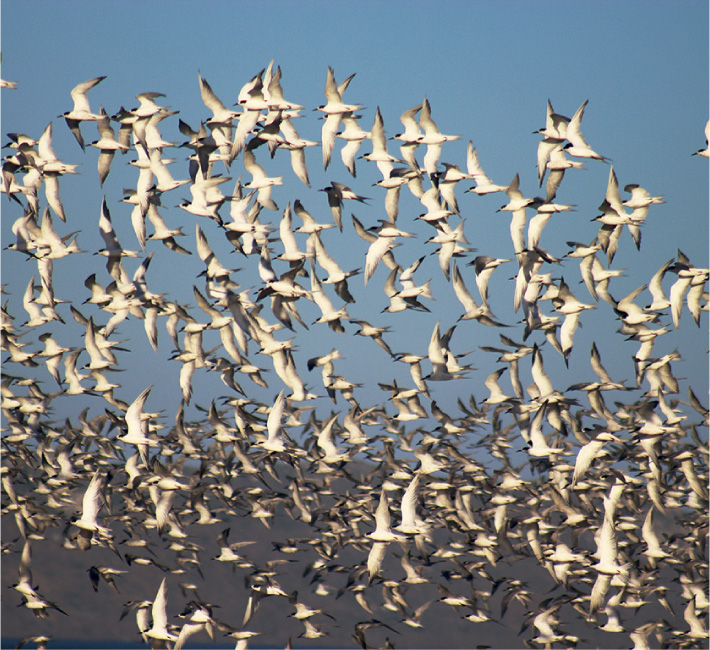

CONTENTS
Jacobsbaai
Langebaan
Common terns
African sacred ibis, West Coast National Park
Lamberts Bay harbour
Signage, Diamond Coast
Wild West Coast at its best; the rugged coastline of Strandfontein extends northwards towards the sheer cliffs near Deurdraf, before it reaches the mouth of the Olifants River.
Alone, we are nothing. It is misleading to think that a book like this is a lone effort, for there were many people involved directly, indirectly, and on many occasions unwittingly and they all made this project a reality.
I am greatly indebted to the Scheeperses for making it possible for me to experience, live, love and explore the West Coast Gideon and Ilse, please accept my deepest gratitude.
Thanks to Pippa Haarhoff at the West Coast Fossil Park for her invaluable contribution, and to Edwin Dwyer for all the information on Saldanha.
Many other people helped in different ways, but I would like to give a special mention to the following for helping me during my journey through the West Coast: Helen Smeiman, Dr Hermanus J Hanekom, Marlyn van Niekerk, Stef Kruger, Claudine van Wyk, Leana Eigelaar Esterhuizen, Suzette Meades Hayward, Robert OConnor, Llew Truter, all members of the Weskus se Mooi Facebook group, and its administrators Hein Nell and Frieda Greyling, and last but not least, the Dwarskersbos Facebook group.
Thanks to Jolene Butler-Wicht for permission to use the quotes from her book on the Wicht family of Saldanha, and to Andre Eigelaar and the Eigelaar family for permission to use quotes from their fathers book.
Huzalle Blake and Eddie Papier of SANParks gave me an unforgettable time exploring the islands in and outside the bay of Saldanha. CapeNatures Beulah du Plessis and Kobus Louw both provided valuable scientific information about wetlands.
Thanks to Thea Grobbelaar for straightening out the grammar and my sentences while checking the facts, and for being exceptionally thoughtful and diplomatic while doing so.
A group of dedicated professionals all contributed to create order from my initial collection of chaos. Many thanks to the publishing team at Struik Nature, who have yet again shown a standard of dedication and expertise second to none. My thanks go to Pippa Parker, who believed in and supported the concept from the beginning; Roelien Theron for her guidance and advice; Natalie Bell for her constructive approach, unwavering attention to detail and tireless suggestions, additions, corrections and guidance; Neil Bester for his meticulous design and layout; and Colette Stott for her diligent and sometimes difficult photographic research.
To all the Weskussers and unsung heroes whom I have met along multiple routes and on many soul-enriching travels baie dankie!
A final word of gratitude and appreciation to my wife Tilla, who yet again was with me in more ways than one, almost every step of the way.
A kelp gull stands sentinel on a makeshift jetty near Velddrif.
Writing about the West Coast has been a dream ever since I completed my last book. I had started writing regularly for a local paper in the Little Karoo, but the West Coast stayed tantalisingly out of reach for logistical reasons. That was until relatives living in Qatar bought a business in Saldanha Bay and asked us to manage it for them.
We had, over the years, fallen into the Little Karoos comfort zone of predictability and stability, and its peoples warmth and hospitality, and although I never took the beauty of De Rust, Meiringspoort, the Swartberg and the vast plains of the Great Karoo and surrounds for granted, there was a growing restlessness in the darker recesses of my soul.
I took a trip to one of my favourite stomping grounds in Meiringspoort, away from the bustle of daily life, and studied the Swartbergs contours and seemingly impossible strata as if seeing them for the first time despite having lived next to them for a decade.
A dassie eyed me cautiously before scampering off into the undergrowth of a pelargonium; a red-winged starling delivered a musical combination of whistles and warbles before it, too, fled from my presence and disappeared up into the cliffs soaring hundreds of metres overhead. A troop of baboons howled its disdain from nearby Meijers Rust, and, but for the bubbling of the Grootrivier snaking down to the south, all was quiet.
It was time to go.

Meiringspoort
The West Coast of South Africa is described here from Melkbosstrand in the south to the Orange River in the north. Most places mentioned in the text are featured on the map opposite. An area depicting the 428,000ha Cape West Coast Biosphere Reserve (outlined on map opposite) is enlarged below. This reserve was proclaimed in 2000 by UNESCO as part of its Man and the Biosphere (MAB) Programme. As for all biospheres, it was established to enhance the relationship between people and their environments and to manage the impact of human development on the natural environment.
The reserve ranges from the mouth of Diep River in the south near Milnerton to the mouth of the Berg River at Velddrif in the north. The Cape West Coast Biosphere Reserve is one of ten such reserves in South Africa the most in any country on the African continent.
Turn to for more detailed information about the Cape West Coast Biosphere Reserve.
Map reproduced by kind permission of its copyright holder: Cape West Coast Biosphere Reserve (NPC)
A serene scene greets the traveller at Smalbaai, halfway between Vredenburg and Saldanha.

